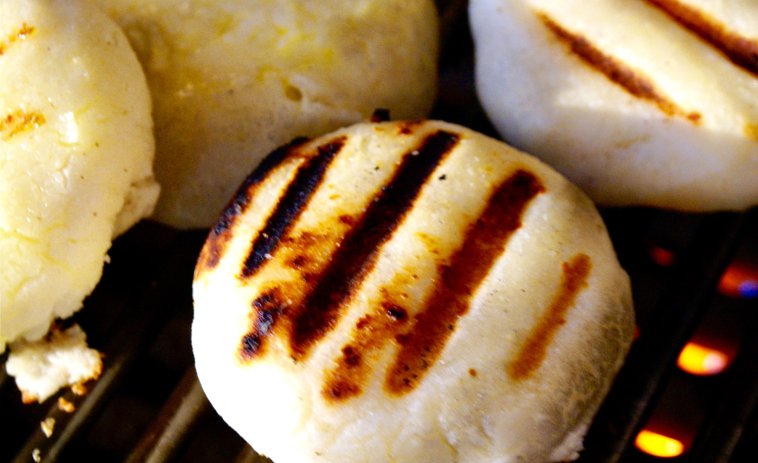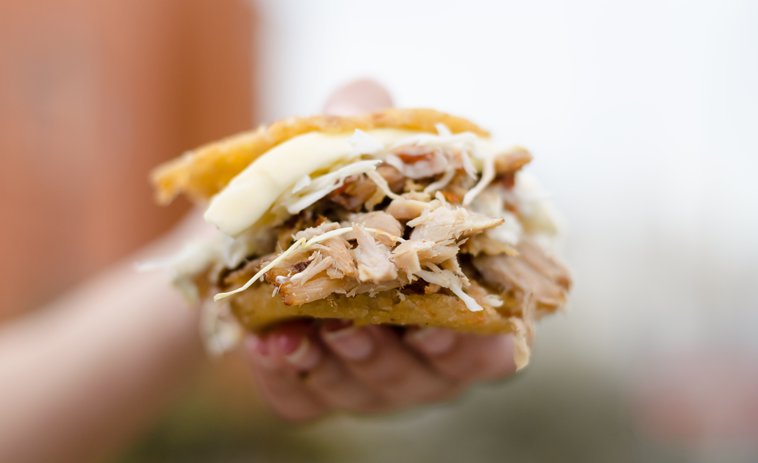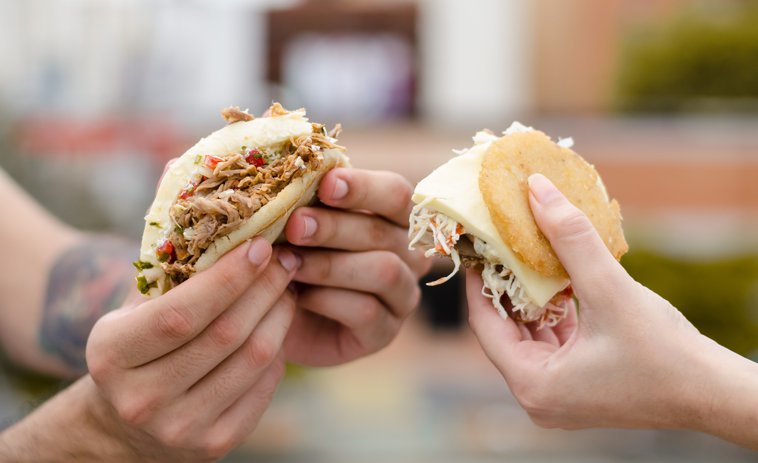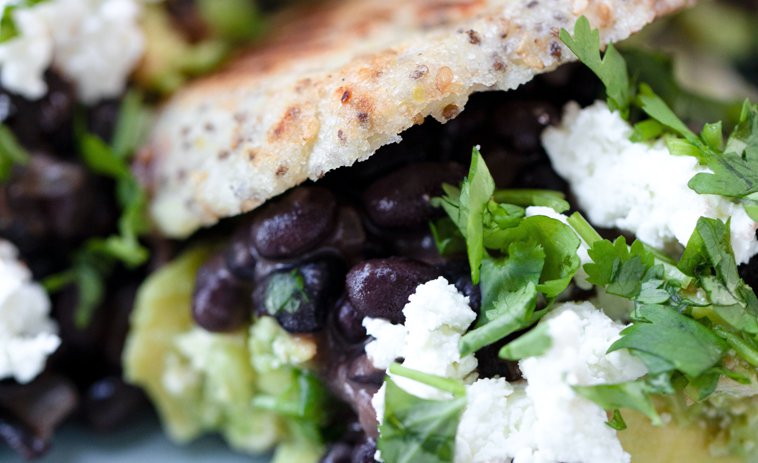Guide to Arepas
Arepas(arepas or corn cakes) hold a special place in both Colombian and Venezuelan cuisines. These delicious cornmeal cakes have deep cultural roots in both countries, and regional varieties can be found in nearly every city. Some arepas are savory and some are sweet; some are plain and some come stuffed with all kinds of delicious rellenos (fillings). Antojado? (Have a craving?) Great! Let’s explore the main things you should know about arepas!
Questions This Article Answers
What is an arepa?
Where can I buy arepas?
Are arepas sweet or savory?
Which are the best arepas?
What's the difference between Colombian and Venezuelan arepas?

What Is an Arepa?
An arepa is a flat, round cake made from harina de maíz (cornmeal). It’s a pre-Columbian dish that originated in the region of what is now Colombia and Venezuela. The word arepa is thought to have come from erepa, an indigenous term for corn or cornbread.
Nowadays, arepas are typically made by mixing pre-cooked cornmeal with water, a pinch of salt, and often some other ingredient to form a smooth dough, which is then shaped into flat, round discs similar to pancakes. The cakes are then cooked on a plancha (griddle) or sartén (pan) until they develop a crispy crust on the outside and a soft and fluffy inside. Depending on the region and the specific recipe, arepas can also be fritas (fried) or horneadas (baked).

Where Do I Find Arepas?
Arepas are an iconic dish in Colombia and Venezuela, to the point of being símbolos culturales (cultural symbols) in both countries. They are sold at restaurants, corner stores, mercados (markets), carritos de comida (food trucks), and by street vendors all over the region.
Is it 3 pm. and time for an afternoon snack? Great! Arepas are not just reserved for a particular meal. You can have them for breakfast or dinner, with an afternoon coffee, as a side or as a main meal. Some people often have them as a late-night snack!

Vocabulary: Arepas
Now that you know what arepas are and where to find them, let’s go over some basic vocabulary so you can order them like a local!
Regional Differences
There are many regional varieties of arepas! Each country and even specific areas have their own unique spin on this beloved dish, with distinct fillings and preparation methods.
Some, like the Colombian arepa de huevo (egg arepa), are fried, while others, like the Venezuelan arepa de queso (cheese arepa) are cooked on a budare (round griddle). Some are typically plain, while others are stuffed with carnes (meats), queso (cheese), or vegetales (veggies).
This diversity is a testament to the rich tapiz cultural (cultural tapestry) of Latin America and the creativity of its people!

The Great Arepa Debate: Colombia vs. Venezuela
This is an age-old question that can ignite discusiones acaloradas (fiery discussions) at family gatherings and food festivals alike - which country makes the best arepas?
Colombian arepas can be topped with different ingredients like queso or huevo (egg) and are perfect for breakfast, as a snack or as an acompañamiento (side). Many Venezuelan arepas, meanwhile, tend to be more like sandwiches: they come with all kinds of delicious fillings and can make for a hearty meal all by themselves.
The truth is, there is no wrong way to make an arepa. There are enough regional varieties within each country to satisfy cada paladar (every palate), and many chefs today even add their own unique twists to them!
Top 5 Venezuelan Arepas

Venezuelan arepas are perhaps better known by the rellenos they have inside more than anything else. So, we're listing them that way!
1) Reina pepiada: A classic Venezuelan arepa filled with pollo mechado (shredded chicken), aguacate (avocado), and mayonesa (mayonnaise). It can also have black pepper, onions or lime.
2) Pabellón: A national favorite, these arepas are filled with carne mechada (shredded beef), caraotas (beans), tajadas (slice of sweet plantains), and queso blanco (white cheese).
3) Dominó : Filled with a combination of caraotas and shredded white cheese. The contrast between the black beans and the white cheese makes the inside of this arepa look a bit like a domino!
4) Catira: A flavorful filling of pollo mechado mixed with queso Gouda (Gouda cheese).
5) Llanera: Filled with carne asada (grilled beef), tomate (tomato), aguacate, and queso guayanés (Guayanes cheese). These are all ingredients found in the llanuras (plains) of Venezuela, which is where this arepa gets its name.
Top 5 Colombian Arepas
 1) Arepa de huevo): Typical of the Caribbean region. This unique variety of arepa is made by enclosing a whole egg within the corn dough and frying it.
1) Arepa de huevo): Typical of the Caribbean region. This unique variety of arepa is made by enclosing a whole egg within the corn dough and frying it.
2) Arepa de choclo: These arepas are made from fresh corn kernels and have a slightly sweet and moist texture.
3) Arepa paisa: A local favorite in the Antioquia region. They’re made with white or yellow cornmeal and cooked until they develop a crispy exterior. They can be topped with mantequilla (butter) or queso.
4) Arepa santadereana: A unique arepa made by mixing yellow cornmeal with chicharrón (pork cracklings) and ceniza (ash) dissolved in water. Yes, you read that right, this arepa has ash as one of its main ingredients!
5) Arepa boyacense: From the region of Boyacá, this arepa is made with yellow cornmeal, flour (harina), and azúcar (sugar), and is filled with queso.
Ordering an Arepa: An Example Conversation
Here’s a conversation between a street vendor and a traveler who wants to buy an arepa:
Still hungry? Check out the following articles:














